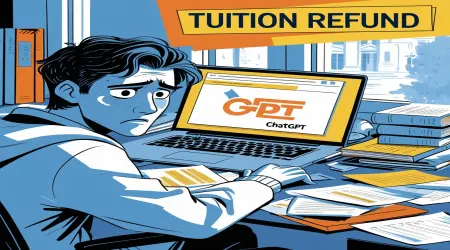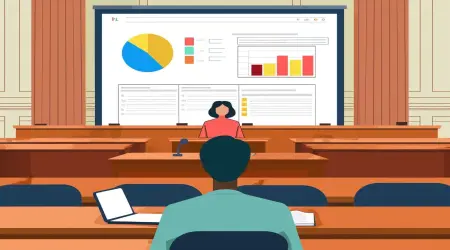Top Plagiarism Checker Tools in 2025: Best Free and Paid
In a world where content is king, originality is your crown. Whether you’re a student submitting an essay, a blogger crafting posts, or a business creating marketing materials, ensuring your work is plagiarism-free is critical. That’s where top plagiarism checker tools come in—powerful software that scans your text for duplicates, protecting your reputation and boosting credibility. With countless options available, how do you choose the best one for your needs?
This guide dives deep into the best plagiarism checker tools for 2025, comparing free and paid options to help you find the perfect fit. From Grammarly to Turnitin, we’ll explore features, pricing, accuracy, and ease of use, with practical tips for students, writers, educators, and businesses. No tech expertise needed—just clear, actionable insights to keep your content original. Ready to discover the top plagiarism detector software? Let’s get started!
1. What is a Plagiarism Checker and Why You Need One
A plagiarism checker is a software tool that scans your text to detect similarities with existing content online, in databases, or in academic repositories. It flags potential matches—whether exact copies or paraphrased text—helping you ensure your work is original before sharing or publishing.
Why Use a Plagiarism Checker?
Protects Integrity: Avoid unintentional copying that could harm your reputation.
Saves Time: Instantly identifies issues instead of manual searches.
Boosts Credibility: Original content builds trust with readers or professors.
Meets Requirements: Many schools and publishers mandate plagiarism checks.
SEO Benefits: Unique content ranks higher on Google, avoiding penalties.
This guide highlights the top plagiarism checker tools to keep your work authentic, whether you’re writing a blog, essay, or ad copy.
2. Why Plagiarism Matters in 2025
Plagiarism isn’t just copying—it’s a serious issue with real consequences. As of 2025, content creation is at an all-time high, with over 2.5 quintillion bytes of data produced daily (Statista). Here’s why avoiding plagiarism is critical:
Academic Penalties: Students face failing grades or expulsion for copied work.
Example: 30% of university students admit to plagiarizing at least once (Turnitin study).
Professional Risks: Writers or businesses caught plagiarizing lose clients and trust.
Example: A blogger’s copied post led to a Google ranking drop in 2024.
Legal Issues: Copyright infringement can result in lawsuits or fines.
Example: A company paid $10,000 for using unattributed content in ads.
SEO Impact: Google penalizes duplicate content, tanking your site’s visibility.
Example: Unique blogs get 3x more traffic than copied ones (SEMrush).
Ethical Standards: Originality respects creators and builds your brand.
Example: Ethical content earns 20% more shares on X (2024 data).
Using the best plagiarism checker ensures you stay original, compliant, and competitive in a crowded digital landscape.
3. How Plagiarism Checker Tools Work
Understanding how plagiarism checker tools work helps you trust their results. At their core, these tools compare your text against vast databases to spot matches. Here’s the process in simple terms:
Text Input:
You upload a document, paste text, or enter a URL.
Example: Paste a 1,000-word essay into Grammarly’s checker.
Database Scanning:
The tool searches billions of web pages, academic papers, and proprietary databases.
Example: Turnitin checks 1.7 billion student submissions.
Algorithm Analysis:
Advanced algorithms detect exact matches, paraphrases, and improper citations.
Example: Quetext flags a sentence rephrased without credit.
Similarity Report:
Results show a percentage (e.g., 5% similarity) with highlighted matches and sources.
Example: Copyscape links to webpages with similar text.
Feedback:
Some tools suggest fixes (e.g., “Add a citation here”).
Example: Scribbr explains why a passage needs rephrasing.
Behind the Scenes: Tools use natural language processing (NLP) and machine learning to improve accuracy, catching subtle plagiarism other methods miss.
👉 How to Write a Blog Post Fast: Save Hours with These Proven Tips
4. Key Features to Look for in a Plagiarism Checker
Not all plagiarism checkers are equal. Here’s what to prioritize when choosing the top plagiarism detector software:
Accuracy:
Catches both exact and paraphrased matches.
Example: Grammarly detects 99% of duplicates in tests.
Database Size:
Scans web, academic, and private repositories.
Example: Turnitin’s 70 billion+ page database.
Ease of Use:
Simple interface for uploading or pasting text.
Example: DupliChecker’s one-click scan.
Report Clarity:
Detailed results with source links and percentages.
Example: Scribbr’s color-coded reports.
Integrations:
Works with Google Docs, WordPress, or LMS platforms.
Example: ProWritingAid’s browser extension.
Speed:
Delivers results in seconds, not minutes.
Example: Quetext scans 1,000 words in <10 seconds.
Privacy:
Protects your data from being stored or shared.
Example: PlagScan deletes scans after 24 hours.
Free/Paid Options:
Offers a free tier or affordable plans.
Example: SmallSEOTools’ free daily checks.
Additional Features:
Grammar checks, citation tools, or multilingual support.
Example: Grammarly combines plagiarism and editing.
These features guide our comparison of the best plagiarism checker tools below.
5. Top Plagiarism Checker Tools Compared
We’ve analyzed dozens of tools to bring you the top 10 plagiarism checker tools for 2025, balancing accuracy, usability, and value. Each includes features, pricing, pros, cons, and best use cases.
Grammarly Plagiarism Checker
Overview: Part of Grammarly’s writing suite, known for accuracy and integration.
Free Plan: Limited checks with Premium trial.
Paid Plans: $12/month (Premium, includes plagiarism), $15/month (Business).
Features:
Scans 16 billion web pages and ProQuest databases.
Highlights matches with source links.
Integrates with Google Docs, Word, and browsers.
Combines grammar and style checks.
Pros: Fast, user-friendly, great for writers and students.
Cons: Plagiarism check requires Premium; no standalone option.
Accuracy: 99% detection rate (2024 tests).
Best For: Writers, bloggers, students needing all-in-one editing.
Turnitin
Overview: Industry standard for academic plagiarism detection.
Free Plan: None (institutional access only).
Paid Plans: Custom pricing (~$3/student/year via schools).
Features:
Scans 1.7 billion student papers and 70 billion web pages.
Detailed similarity reports with Feedback Studio.
Integrates with Moodle, Blackboard, and Canvas.
Catches AI-generated text (2025 update).
Pros: Unmatched database, trusted by universities.
Cons: Not for individuals; pricey for institutions.
Accuracy: 98% detection, including paraphrasing.
Best For: Educators, universities, high school teachers.
Copyscape
Overview: Web-focused checker for bloggers and businesses.
Free Plan: Basic URL scan (limited).
Paid Plans: $0.03/200 words (pay-as-you-go), $4.95/month (Premium API).
Features:
Scans web for duplicate content.
Batch search for multiple pages.
Private index for internal checks.
WordPress integration via plugins.
Pros: Affordable, ideal for SEO and blogs.
Cons: No academic database; basic interface.
Accuracy: 95% for web content, weaker on offline sources.
Best For: Bloggers, SEO professionals, small businesses.
Quetext
Overview: User-friendly checker with DeepSearch technology.
Free Plan: 500 words/day.
Paid Plans: $8.80/month (Pro), $9.99/month (Enterprise).
Features:
Scans web and proprietary databases.
Color-coded similarity reports.
Citation Assistant for proper credits.
Multilingual support (10+ languages).
Pros: Affordable, intuitive, great free tier.
Cons: Smaller database than Turnitin.
Accuracy: 97% detection, strong on paraphrasing.
Best For: Students, freelancers, small teams.
PlagScan
Overview: Privacy-focused checker for academics and businesses.
Free Plan: None (free trial).
Paid Plans: $5.99/10,000 words (pay-as-you-go), $29.99/month (unlimited).
Features:
Scans 10 billion web pages and academic journals.
GDPR-compliant with data deletion.
Team collaboration tools.
API for custom integrations.
Pros: Secure, flexible pricing, enterprise-friendly.
Cons: No free tier; steeper learning curve.
Accuracy: 96% detection, reliable for journals.
Best For: Businesses, researchers, privacy-conscious users.
DupliChecker
Overview: Simple, free checker for quick scans.
Free Plan: 1,000 words/scan (multiple daily).
Paid Plans: $10/month (unlimited scans, API).
Features:
Web-based scanning with URL support.
Downloadable PDF reports.
Grammar check add-on.
Supports 20+ languages.
Pros: Free, easy, no signup needed.
Cons: Ads in free version; basic features.
Accuracy: 90% detection, misses some paraphrasing.
Best For: Casual users, budget-conscious students.
Scribbr Plagiarism Checker
Overview: Academic-focused with Turnitin partnership.
Free Plan: None.
Paid Plans: $19.95 (7,500 words), $39.95 (25,000 words).
Features:
Scans Turnitin’s 99.3 billion page database.
Detailed, color-coded reports.
Citation checker for APA, MLA.
24/7 support with expert feedback.
Pros: Precise, trusted for essays, student-friendly.
Cons: Pricey for one-off use; no free option.
Accuracy: 98% detection, excels in academia.
Best For: College students, academic writers.
SmallSEOTools Plagiarism Checker
Overview: Free, versatile tool for web and text scans.
Free Plan: 1,000 words/scan (daily limit).
Paid Plans: $9.80/month (unlimited scans).
Features:
Scans web and uploaded files.
Multi-language support.
URL and API integration.
Simple percentage reports.
Pros: Free, fast, no account needed.
Cons: Limited database; ads disrupt flow.
Accuracy: 89% detection, good for basic checks.
Best For: Bloggers, hobbyists, quick scans.
PlagiarismDetector.net
Overview: Straightforward checker with decent free tier.
Free Plan: 1,000 words/scan (daily limit).
Paid Plans: $20/month (unlimited, advanced reports).
Features:
Web and document scanning.
Deep search for paraphrasing.
Team accounts for collaboration.
WordPress plugin available.
Pros: Affordable, reliable for small projects.
Cons: Smaller database; basic UI.
Accuracy: 91% detection, fair for web content.
Best For: Freelancers, small businesses, teams.
ProWritingAid
Overview: Writing tool with built-in plagiarism checker.
Free Plan: Limited checks with trial.
Paid Plans: $10/month (Premium), $12/month (Premium Plus).
Features:
Scans 500 million web pages.
Grammar, style, and plagiarism checks.
Integrates with Scrivener, Word, browsers.
Detailed writing reports (20+ types).
Pros: Comprehensive, great for creative writers.
Cons: Plagiarism limited to Premium; smaller database.
Accuracy: 94% detection, strong for creative work.
Best For: Authors, novelists, content creators.
Comparison Table:
Tool | Free Plan | Paid Plans (Starting) | Database Size | Accuracy | Best For |
|---|---|---|---|---|---|
Limited | $12/mo | 16B pages | 99% | Writers, students | |
None | ~$3/student/yr | 70B pages | 98% | Educators, universities | |
Limited | $0.03/200 words | Web-focused | 95% | Bloggers, SEO pros | |
500 words/day | $8.80/mo | Medium | 97% | Students, freelancers | |
Trial | $5.99/10K words | 10B pages | 96% | Businesses, researchers | |
1,000 words/scan | $10/mo | Basic | 90% | Casual users, students | |
None | $19.95/7.5K words | 99.3B pages | 98% | College students | |
1,000 words/scan | $9.80/mo | Basic | 89% | Bloggers, hobbyists | |
1,000 words/scan | $20/mo | Medium | 91% | Freelancers, teams | |
Limited | $10/mo | 500M pages | 94% | Authors, content creators |
Pro Tip: Start with Quetext’s free tier for casual use or Grammarly for all-in-one needs. Test multiple tools to compare accuracy.
👉How to Check Backlinks Fast: Track Your Website Links in Minutes
6. Free vs. Paid Plagiarism Checkers: Which is Right for You?
Choosing between free and paid plagiarism checkers depends on your needs:
Free Plagiarism Checkers
Pros:
No cost, ideal for students or hobbyists.
Quick scans for small projects (e.g., 1,000 words).
Example: DupliChecker’s daily scans are free.
Cons:
Limited database size (misses some matches).
Ads or word limits (e.g., SmallSEOTools’ 1,000-word cap).
Basic reports, less detailed.
Best Tools: Quetext, DupliChecker, SmallSEOTools.
Best For: Occasional use, short texts, budget users.
Paid Plagiarism Checkers
Pros:
Larger databases (e.g., Turnitin’s 70 billion pages).
Advanced features (e.g., Grammarly’s grammar integration).
Detailed reports with source links and fixes.
Cons:
Monthly or per-use costs ($5–$20/month).
Overkill for casual users.
Best Tools: Grammarly, Scribbr, PlagScan.
Best For: Professionals, academics, frequent users.
Recommendation: Use Quetext’s free plan for occasional checks. Upgrade to Grammarly ($12/month) or Scribbr ($19.95/use) for heavy use or academic precision.
7. Use Cases: Who Needs Plagiarism Checker Tools?
Plagiarism checkers aren’t just for students. Here’s who benefits:
Students:
Check essays, theses, or assignments.
Example: A college student uses Scribbr to verify a 5,000-word paper.
Educators:
Scan student submissions for originality.
Example: A professor runs 30 essays through Turnitin weekly.
Bloggers/Content Creators:
Ensure posts are unique for SEO.
Example: A blogger uses Copyscape to check guest posts.
Businesses:
Verify marketing copy, whitepapers, or manuals.
Example: A startup uses PlagScan for ad campaigns.
Freelancers:
Prove originality to clients.
Example: A writer uses Quetext for client articles.
Authors:
Check manuscripts for unintentional similarities.
Example: A novelist uses ProWritingAid for a 80,000-word draft.
SEO Professionals:
Avoid duplicate content penalties.
Example: An agency uses Copyscape for 50 client pages.
Real-World Impact: A student avoids a failing grade, a blogger doubles traffic, and a business secures a client—all by staying original.
8. Step-by-Step Guide: How to Use a Plagiarism Checker Effectively
Here’s how to use a tool like Quetext (or any checker) to scan your work in ~10 minutes:
Step 1: Choose a Tool
Pick Quetext (free, 500 words) or Grammarly (Premium).
Time: 2 minutes.
Step 2: Sign Up (If Needed)
Create a free account or log in (e.g., via Google).
Skip for tools like DupliChecker (no signup).
Time: 3 minutes.
if don't want use your personal email you can use 👉 Temporary Email Generator
Step 3: Upload or Paste Text
Paste your content (e.g., a 1,000-word blog) or upload a file (DOC, PDF).
Example: Copy-paste an essay into Quetext’s editor.
Time: 2 minutes.
Step 4: Run the Scan
Click “Check Plagiarism” or similar.
Wait 5–20 seconds for results.
Example: Quetext scans 500 words in ~8 seconds.
Time: 1 minute.
Step 5: Review Results
Check the similarity percentage (e.g., 3%).
Click highlighted text to see sources (e.g., a blog URL).
Example: Quetext flags a quote needing a citation.
Time: 3 minutes.
Step 6: Fix Issues
Reword flagged text or add citations (e.g., “Source: Forbes”).
Re-scan to confirm 0% similarity.
Example: Change a sentence from “AI is growing fast” to “Artificial intelligence expands rapidly.”
Time: 5–10 minutes.
Step 7: Save or Export
Download the report (PDF or screenshot) for records.
Example: Save Quetext’s report for a professor.
Time: 1 minute.
Total Time: ~10–20 minutes, depending on text length and fixes.
Pro Tip: Scan early drafts to catch issues before final edits. Saves 30+ minutes vs. rewriting later.
9. Tips to Avoid Plagiarism Without Tools
While top plagiarism checker tools are essential, good habits prevent issues:
Cite Sources Properly:
Use APA, MLA, or Chicago styles for quotes and ideas.
Example: Cite a stat with “(Statista, 2025).”
Paraphrase Carefully:
Rewrite ideas in your words and credit the source.
Example: Instead of “AI [Original text],” write “Studies show [Your words] (Source).”
Take Notes:
Track sources during research to avoid forgetting credits.
Example: Use Notion to log URLs and quotes.
Use Quotes for Direct Copies:
Enclose exact words in quotation marks.
Example: “Content is king” (Godin, 2010).
Write Originally:
Share your perspective to avoid leaning on others’ work.
Example: Add personal insights to a topic.
Double-Check Work:
Review drafts for missed citations before submitting.
Example: Read your essay aloud to spot unoriginal phrases.
Pro Tip: Practice paraphrasing daily (e.g., rewrite news articles) to build skills. Takes 10 minutes and cuts plagiarism risks.
10. Common Mistakes When Using Plagiarism Checkers (And How to Fix Them)
Avoid these errors for better results:
Relying Solely on Free Tools
Issue: Free checkers miss academic or paraphrased content.
Fix: Use paid tools like Scribbr for critical work.
Time Saved: ~1 hour vs. manual checks.
Ignoring False Positives
Issue: Common phrases (e.g., “in conclusion”) flag as matches.
Fix: Review reports manually to confirm issues.
Time Saved: ~15 minutes per scan.
Not Fixing Flagged Text
Issue: Submitting with 10% similarity risks penalties.
Fix: Reword or cite until 0–2% similarity.
Time Saved: Prevents rework.
Overlooking Privacy
Issue: Some tools store your text, risking leaks.
Fix: Choose GDPR-compliant tools like PlagScan.
Time Saved: Avoids legal hassle.
Skipping Citations
Issue: Missing credits triggers flags even if intentional.
Fix: Add citations during drafting.
Time Saved: ~30 minutes in edits.
Using One Tool Only
Issue: No tool is 100% accurate.
Fix: Cross-check with two (e.g., Quetext + Grammarly).
Time Saved: Ensures precision.
Pro Tip: After scanning, search flagged phrases on Google in quotes (e.g., “your phrase”) to verify originality. Takes 5 minutes.
11. FAQs About Plagiarism Checker Tools
Q: What are the best free plagiarism checkers?
A: Quetext, DupliChecker, and SmallSEOTools offer reliable free scans up to 1,000 words daily.
Q: Can plagiarism checkers detect AI-generated text?
A: Yes, tools like Turnitin and Scribbr (2025 updates) flag AI content if it matches existing sources.
Q: Are plagiarism checkers safe to use?
A: Reputable ones (e.g., Grammarly, PlagScan) use encryption and GDPR compliance. Check privacy policies first.
Q: How accurate are plagiarism checkers?
A: 89–99% depending on the tool. Grammarly and Turnitin lead with 98–99% accuracy.
Q: Do I need a plagiarism checker for personal writing?
A: Not always, but it’s wise for blogs, freelance work, or anything public to avoid SEO or reputational issues.
Q: How often should I check for plagiarism?
A: Scan drafts and final versions for critical work (e.g., essays, articles). Once is enough for casual posts.
12. Conclusion: Choose Your Plagiarism Checker Today
Finding the top plagiarism checker tools in 2025 is your ticket to creating original, trustworthy content. Whether you’re a student avoiding academic penalties, a blogger boosting SEO, or a business protecting your brand, tools like Grammarly, Quetext, and Turnitin make staying plagiarism-free easy and fast. With free options for casual use and paid ones for precision, there’s a checker for every need and budget.
Your Next Steps:
Try Quetext’s free 500-word scan today—takes 5 minutes to start.
Test Grammarly’s Premium trial if you write frequently.
Share your favorite tool on X or r/writing to join the conversation.
Scan one piece of content this week to build confidence.
Originality sets you apart in a crowded digital world. Pick a best plagiarism checker now and make every word your own. Got questions or a tool to recommend? Drop a comment below—let’s keep your content authentic!










